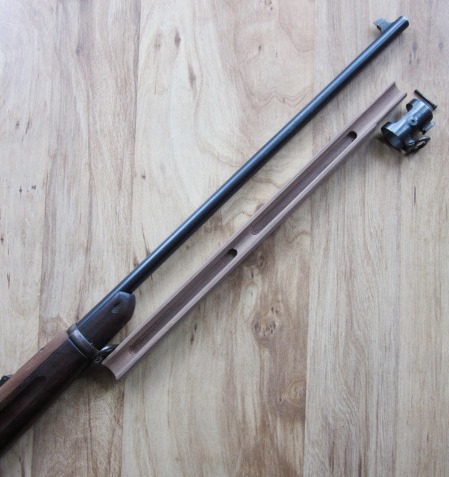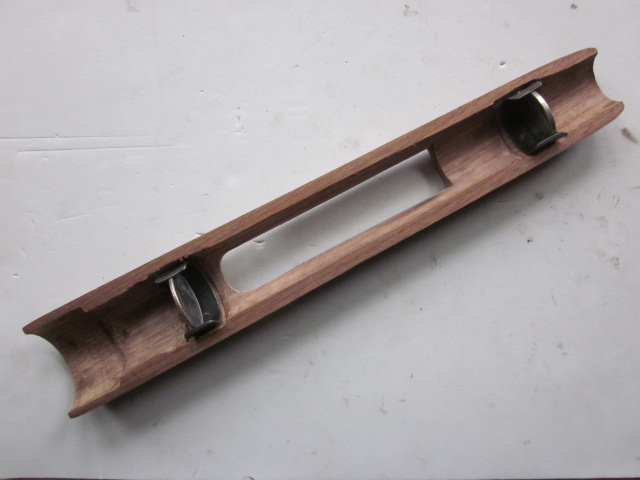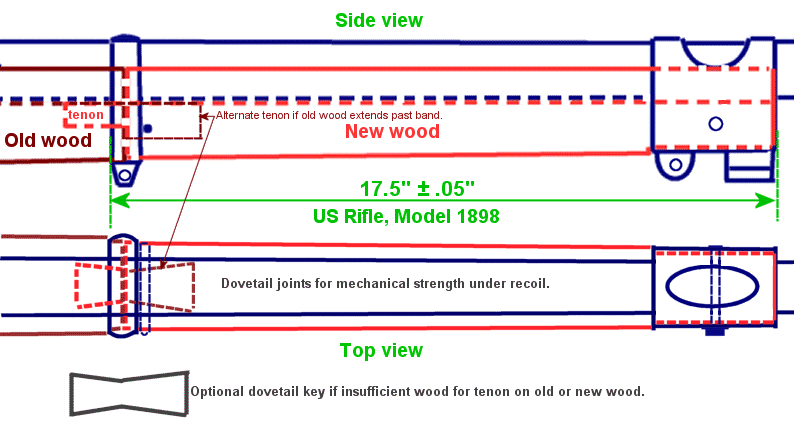Thomas: Welcome to the KCA Forum! That's a neat family heirloom that you have. U.S. Model 1896 rifle, #48,875, was built about December, 1896. It is great that it has been used by three generations of your family. You can certainly use and enjoy it as is.
However, your rifle is one of the very small percentage of Krags that shows up in official U.S. Army documentation.
(per - Springfield Research Services, records research):
Model 1896 rifle, #48,875, was issued in 1898 to Company B, 1st U.S. Volunteer Engineers.
You do appear to have a hand-guard on your rifle, as well as, an original rear sight. The restoration, Dick Hosmer mentioned, would require a replacement forearm section and front barrel-band & screw. (picture attached).
(If you send me a PM with an address, I'll send you some Krag 'instructions').







